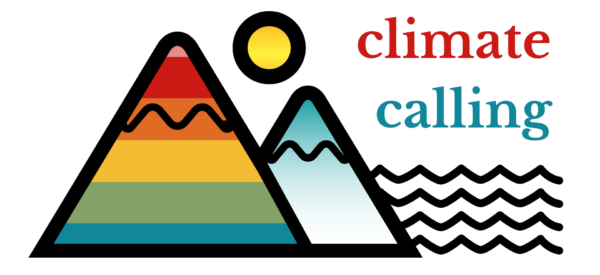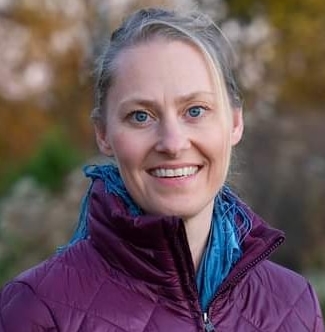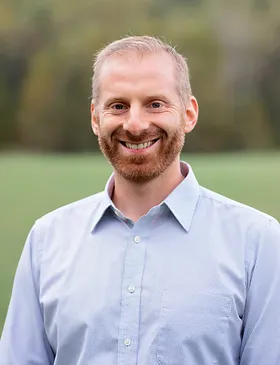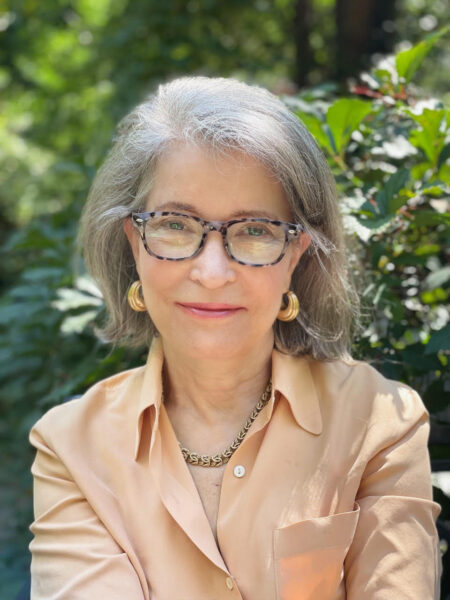
Increasingly, Americans of all generations are suffering from climate anxiety.
There are, of course, a growing number of people who are directly impacted by climate disasters — severe weather, extreme heat, wildfires, even sunny-day flooding. But there are also an increasing number of people who are simply prone to worry — and in some cases, outright panic — over the freakish images and disturbing forecasts about the long-term impact of climate change that are now unavoidable.
“We have an epidemic of anxiety,” said Dr. Heidi Schreiber-Pan, a Towson-based psychotherapist whose practice focuses on harnessing nature’s potential in therapeutic contexts. “More people than ever are calling for help because they have so many anxieties and they wonder if there’s hope.”
Maryland has been slammed by its share of recent climate disasters — two “1,000-year” floods in Ellicott City two years apart, a destructive tornado in Annapolis, the drowning of a man in his basement apartment during a heavy rainstorm in Rockville, and the constant reality of floods throughout the state. But Schreiber-Pan and Dr. Jon Gorman, a clinical psychologist in Towson who counsels several patients about climate anxiety, said many of their clients saw the Canadian wildfires in June, which brought surreal smoky orange skies to Maryland for several days, as particularly apocalyptic and confining.
“It’s harder to use the defenses of denial and disavowal” of climate change when the impacts are so immediate and apparent, Gorman said.
Schreiber-Pan said she had two patients who reported at the time that they were so scared, they could not get out of bed.
“They were so paralyzed by fear,” she said. “It was right in their backyard.”

Click here to read more from our Climate Calling series.
As climate anxieties increase, a small but growing number of mental health practitioners are working to address people’s fears. These climate therapists are employing a range of tactics to help their patients cope — and often find themselves at odds with general industry norms and practices. Many have unwittingly become climate activists themselves, or are prescribing climate activism as a way to help their patients work through their anxieties through collective political action.
“We need that climate anxiety,” said Dr. Lise Van Susteren, a pioneering psychiatrist in the field of climate therapy whose practice is in Washington, D.C., though she lives in Bethesda. “We need to turn what we know into what we do. There’s a lot of energy in that climate distress and we need to use every last jewel of it. If you look inward, you’re going to get more depressed.”
Maryland Matters in recent weeks conducted lengthy interviews with Schreiber-Pan, Gorman and Van Susteren, three of the leading practitioners of climate therapy in the region. Through them, a picture of the developing field emerged — along with different strategies for dealing with the unending drumbeat of bleak environmental news. Each came to the practice through different routes, and each expressed different, though occasionally intersecting, views about how to cope with the climate crisis.
Heidi Schreiber-Pan
Schreiber-Pan grew up in the German state of Bavaria, in a mountainous region near the border of Austria. Although she has been in the U.S. since she went to college, her upbringing has shaped her outlook on climate change and the importance of being out in nature.
“It’s been personally enriching to me to be in the natural world,” said Schreiber-Pan, who calls spending time outdoors “therapy for free.” In her view, people who “connect with nature as their primary therapist” will, by extension, become devoted stewards of the environment.

Dr. Heidi Schreiber-Pan. Courtesy photo.
That theory has informed her practice for years. But as the climate crisis worsens, she has found that “getting closer to the natural world also brings up grief.” And that can stifle conversation about the impacts of climate change — and how people should cope and adjust.
“It’s not that people are indifferent about the climate,” Schreiber-Pan said. “It’s that they are so afraid of these big feelings. They don’t know how to behave.”
This point was especially brought home when Schreiber-Pan took on a middle-aged patient who was a climate scientist, panicked about what he was seeing.
“This was really hard for me, to tell you the truth,” she recalled. “The climate scientist had the hard data to tell me we’re screwed.”
But those conversations also showed Schreiber-Pan that traditional approaches to therapy wouldn’t work when trying to help people who are feeling hopeless about their own futures — or their children’s — because the Earth is warming. After talking with fellow therapists, Schreiber-Pan emerged with a strategy — and a calling.
She is now the founder of a wellness organization called the Center for Nature-Informed Therapy, which seeks to combine nature-based psychotherapy with mainstream therapeutic practices. She has written two books on nature and psychological wellness. And she also offers trainings on the topic — not just for fellow counselors, but also for parks and recreation employees, government scientists, green groups, educators and other professionals dedicated to protecting the environment.
Even in the midst of an unending climate crisis, “we still have to seek out beauty and joy,” Schreiber-Pan said. “There are days when you can usually feel hopeless. We wouldn’t be human if we didn’t feel that empathy and sense of pain around it. The window of tolerance is a place where we’re alert and concerned, but where we don’t get paralyzed.”
As the mother of teenagers, Schreiber-Pan admits to freaking out occasionally about the future of the planet, but she tries to reassure patients by telling them, “we simply don’t know what the future holds.”
For evidence, she cites things like the growing number of electric vehicles on the road, China’s commitment to clean energy, and the vocal climate activism of younger people.
“The nature of the mind is to focus on what’s going wrong,” she said. “It’s important to know that there are a lot of positive actions happening. We have predictions and all. But we also know humans are very resilient and creative.”
Jon Gorman
Gorman grew up in a quiet part of central New Jersey, and moved to the Baltimore area to earn his doctoral degree in clinical psychology at Loyola University. He’s been here ever since, and in practice for the past 15 years.
Gorman has a general practice in downtown Towson but has gradually taken on climate therapy as a major focus, as he’s received an increasing number of calls for help with the climate crisis. These calls have coincided with his own growing worries about the world his daughters, who are 5 and 1, will inherit.

Dr. Jon Gorman. Courtesy photo.
“I’d been feeling my own anxiety and grief about what the world around us is going to look like and what the future is like for me and my kids,” Gorman said. “I’ve started to panic at the world all around us. To me it was clear as could be how the environment around us has changed and how terrible a job humans have done to protect our planet.”
While people have talked about the weather from time immemorial, Gorman said he’s been struck by how difficult it has been to have meaningful conversations about the obvious ravages of climate change — from a policy standpoint, and more importantly, from a personal standpoint.
Patients would start talking about their fears, “and I wouldn’t know how to respond,” he conceded. “People make small talk all the time about the weather. But when someone says something in the therapy room, it takes on a different level.”
Gorman said he started hearing from people who were trying to talk about their climate fears with their therapists but were dissatisfied by their advice.
“I’ve had a handful of people who brought up these issues with their previous therapists and were getting unhelpful responses,” he recalled. “Standard or mainstream therapy practice would say, ‘OK, these are products of anxiety. Let’s treat these symptoms and cognitive effects.’”
Gorman believes that the climate crisis demands a different strategy.
About three years ago, he decided to educate himself about the emerging movement of psychotherapists and other mental health professionals who were practicing climate therapy. He joined the Climate Psychology Alliance of North America and signed up for the group’s trainings. From there, he began to develop his own approach for helping people with climate anxieties. One key tenet: Climate fear isn’t necessarily something to try to fight and overcome.
“The approach of a climate aware therapist is probably going to be different,” Gorman said. “Based on the objective science, your fears are probably justified.”
So how does Gorman advise his patients?
One regular piece of advice: Don’t run away from the climate crisis or the anxiety it produces. But use that disquiet to focus on what’s important in life.
“There’s a lot of value in listening to those uncomfortable emotions,” Gorman said. “They are pointers to things we care about most in life. Anger is OK. Sadness is important. What we want it to lead to is how we want things to go better.”
Gorman said there are three different categories of fear about the changing climate that he likes to work on with his patients:
- “Egoistic values,” which focus on the primary question, “am I going to be OK?”
- “Altruistic values,” which are concerns about loved ones and communities
- “Biocentric values,” which are concerns about the impact of climate change on Earth, animals and “beautiful spaces”
There are also day-to-day challenges to cope with. Hot weather, for example, which now generally runs longer and more intensely than it once did in the Mid-Atlantic, affects people’s cognitive abilities and moods. People have more trouble sleeping and concentrating during extreme heat. People are more snappish. Violence increases.
“This is the hottest year on record and over the next 10 years this will be the coolest year for the next 10-20 years,” Gorman said.
He also doesn’t want to sugarcoat the climate crisis.
“I actually don’t try to reassure myself. I don’t think reassurance is helpful. Because that rings hollow to me. Things are not going to be OK. The future is uncertain.”
But Gorman said the climate crisis presents an opportunity for people to change their lifestyles and come up with policy solutions (he has become a legislative advocate for climate solutions at the state and national levels). And they should consider how to connect with family, friends and community — and the natural world, he says. People should spend more time in the woods or at the beach or gardening. They should go hiking and camping. And they should remember that individual actions can make a difference when confronting the climate crisis.
“I’m of the generation and mindset where every decision I make is based on how it impacts the environment,” Gorman said. He pays attention to food packaging. He tries to repair or reuse as many of his possessions as possible, rather than throwing them away.
“We can’t just live a meaningful life by trying to limit our footprint,” he said. “The meaning will come from meaningful impacts and encounters with others.”
Lise Van Susteren
In 2005, Van Susteren, a forensic psychiatrist, launched an audacious campaign for an open U.S. Senate seat in Maryland. She was the only woman in the Democratic primary, and emphasized health care reform, including mental health, same-sex marriage, and the environment, at a time when those issues weren’t automatically staples in the Democratic political lexicon. Nine months later, however — and 4 1/2 months before the primary — she dropped out of the race, citing an inability to raise sufficient money for the expensive campaign.
All these years later, Van Susteren finds herself regretting that her short-lived political career wasn’t successful.
“About three times a week I’m sad I didn’t make it to the Senate,” she said. “If you don’t have power it feels like you’re shaking your fist at the gods.”

Dr. Lise Van Susteren. Courtesy photo.
Even without the power of political office, Van Susteren over the past two decades has had enormous influence over climate therapy, climate policy — and climate jurisprudence.
She’s one of the founders of the Climate Psychiatry Alliance and Climate Psychology Alliance North America. She was trained directly by former Vice President Al Gore to give lectures on global warming based on “An Inconvenient Truth,” the documentary about his climate work. In 2009, working with the National Wildlife Federation, she convened one of the first gatherings of experts on climate disruption, national security, and disaster psychiatry to discuss the unfolding crisis and its future impacts on the mental health of the public.
Van Susteren sits on the boards of the Chesapeake Climate Action Network, the Earth Day Network, and Physicians for Social Responsibility. She’s a former member of the advisory board of the Center for Climate, Health, and the Global Environment at the Harvard School of Public Health, and she teaches at Georgetown University. And she has co-authored two books about climate change.
But those are just credentials. What Van Susteren has done is literally help create the field of climate therapy out of whole cloth. And she ties the act of helping individuals cope with their fears — which she calls “a real connection to humanity” — to collective action.
Climate distress, she says, “isn’t mental illness. It’s a survival strategy.”
Van Susteren is amazed at how quickly the discipline of climate therapy has developed — but laments that it’s a function of how much worse the crisis has gotten in such a short amount of time.
“Before, it was the scientists making the case that climate change is happening,” she said. “Now Mother Nature is. We are now speeding towards the cliff.”
Van Susteren asserts that the number of people suffering from climate anxiety is “impossible to quantify.” But she and some colleagues attempted to catalogue the fears of the younger generation in a groundbreaking 2021 study that interviewed 10,000 people, ages 16 to 25 in 10 countries. More than three-quarters of the survey respondents said they worried about how climate change was impacting their future. Half said climate change directly impacts their daily lives. And two-thirds blamed their governments for the predicament the world is in.
Van Susteren recalls the nuclear scares of her youth and compares it to the climate anxieties of the present.
“That was so different from what the kids know today,” she said. “This is something that’s extremely visual.”
That puts the burden on government leaders to respond aggressively, Van Susteren said. “How do you help them cope? You can’t tell them a political fairy tale.”
Van Susteren has been an expert witness in two recent high-profile climate court cases filed by youthful plaintiffs. One was Held v. Montana, in which 16 young people maintained that the State of Montana’s failure to consider greenhouse gas emissions from energy and mining projects violates the state constitution because it does not protect Montanans’ right to a clean and healthful environment. A state judge in August ruled in favor of the plaintiffs, and said the state is obligated to maintain and improve the environment and provide remedies to prevent the depletion and degradation of Montana’s natural resources.
Van Susteren has also offered expert testimony in the preliminary proceedings of a federal case, Juliana v. U.S. Government, which involves 21 youthful plaintiffs claiming that decisions by the federal government have led to climate change, violating the youngest generation’s constitutional rights to life, liberty, and property, and failing to protect vital public resources. That eight-year-old case has taken several procedural turns and has not yet gone to trial.
Van Susteren has other projects going: She and some colleagues are developing what they’re calling an “EcoCyclopedia,” an online resource on climate change and how to cope with its effects. She is also working with the United Way and other organizations on an idea to create a 2-1-1 climate crisis hotline, staffed by trained counselors who can help people with their anxieties.
And Van Susteren continues to see patients one-on-one to discuss their climate fears. She describes her public and private efforts on climate change as “20 years of pounding.” She is unafraid to marry advocacy with therapy, and to mix it all with a measure of scolding — a reminder that people need to take responsibility for their own carbon footprints, which, she believes, does not happen often enough.
“What is our job? It’s to act collectively on climate,” Van Susteren said. “That is the treatment.”